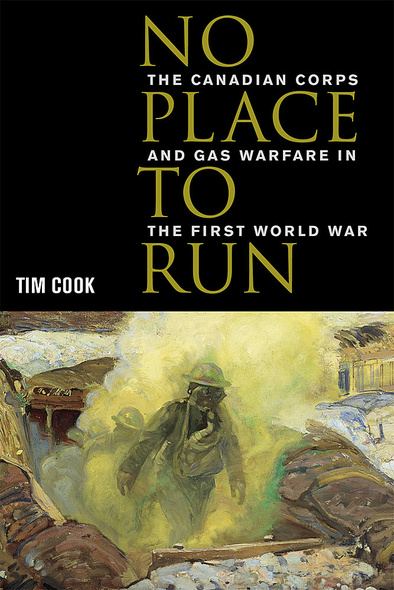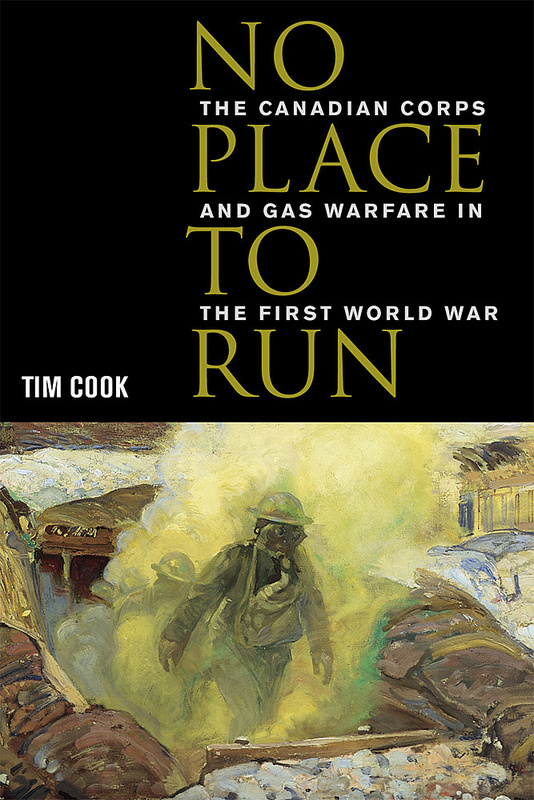
Historians of the First World War have often dismissed the important role of poison gas in the battles of the Western Front. In No Place to Run, however, Tim Cook shows that the serious threat of gas did not disappear with the introduction of gas masks. By 1918, gas shells were used by all armies to deluge the battlefield, and those not instructed with a sound anti-gas doctrine left themselves exposed to this new chemical plague.
Cook uses fascinating primary sources -- diaries, letters, reminiscences, published memoirs, and the official archival record -- to illustrate the horror of gas warfare for the average trench soldier. As the first chlorine clouds rolled across the fields during the 2nd Battle of Ypres, soldiers were forced to stuff urine-soaked handkerchiefs in their mouths in order to survive. As the gas war evolved, mustard gas plagued the soldiers at the front as it lay active in mud and snow for weeks on end. There was no escape from the pervasive nature of poison gas. Entering the dug-outs, it attacked men when they were least ready. In response, the Canadian Corps had to develop an anti-gas doctrine, a process that Cook describes in full.
No Place to Run provides a challenging re-examination of the function of gas warfare in the First World War, including its important role in delivering victory in the campaign of 1918 and its curious postwar legacy. It will be of interest both to historians and military buffs.
No Place to Run will be of interest both to historians and military buffs.
Awards
- 2002, Winner - Charles P. Stacey Award
- 1999, Commended - Alcuin Citation for excellence in book design in Canada, Alcuin Society
Well researched and well written, this detailed study describes how the Canadian Corps in the Great War reacted to gas warfare and learned both how to cope with it and how to use it. What makes Cook’s book so interesting is his emphasis on the psychological threat posed by gas warfare. A fine study. All levels.
No Place to Run provides a challenging re-examination of the function of gas warfare in WWI, showing not only its important role in delivering victory in the campaigns of 1918 but also its postwar legacy.
Tim Cook takes his readers on a fascinating, horrific, and ultimately important journey through the terrifying gas warfare experiences of the Canadian Corps during the First World War. In an exhaustively researched, well-written work offering a large number of firsthand accounts, Cook powerfully conveys the meaning of gas warfare to a Canadian soldiery at first wholly unprepared for its unsheathing ... Cook’s first-rate book ably fills a gap in the literature on Canada’s participation in the First World War and makes a major contribution to our understanding of this underexplored aspect of Canadian military history.
Introduction: The Gas War Unearthed
1 Trial By Gas: 2nd Battle of Ypres
2 Rabbits In A Warren: April, 1915 - December, 1915
3 A Higher Form of Killing: December, 1915 - December, 1916
4 Tough Guys: January, 1917 - June, 1917
5 Mustard: King of the Battle Gases: July, 1917 - December, 1917
6 Combatting the Chemical Plague: The Canadian Medical Army Corps and Gas Warfare
7 Its Got Your Number: January, 1918 - August, 1918
8 The Gas Environment: Last Hundred Days
Conclusion: It Takes More Than Gas To Stop A Canadian
Select Bibliography




